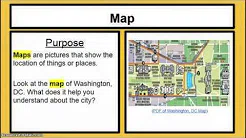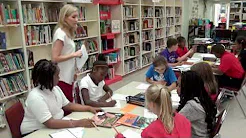Get Full Access to Obsolete - Grade 3 English Language and Arts - SkillBuilder + GMAS Rehearsal
Currently, you have limited access to Obsolete - Grade 3 English Language and Arts - SkillBuilder + GMAS Rehearsal. The Full Program includes,
Buy Practice Resources
 Online Program
Online Program
Read the passage and answer the question.
Everything in nature follows a pattern. Circles, lines, spirals, and angles are repeated to make a pattern. Patterns in nature are not just pretty adornments. They serve a purpose that has helped nature survive and flourish.
Have you ever taken a close look at a beehive? (Well, not too close or you might get stung!) The natural pattern in beehives is so perfect that it seems to be computer designed. The hives are made up of layers and layers of cells. Each cell has six perfectly equal sides. Why would bees build hexagonal cells, why not circular or box-shaped ones? The bee is a genius at geometry and architecture! Six-sided cells allow bees to get maximum space for storing honey. Hexagons also use the least building material because all six sides are common to other cells. The bees don’t waste space, material or effort. Aren’t they smart insects?
Based on the selection, what is likely to happen to you if you go near a beehive?









